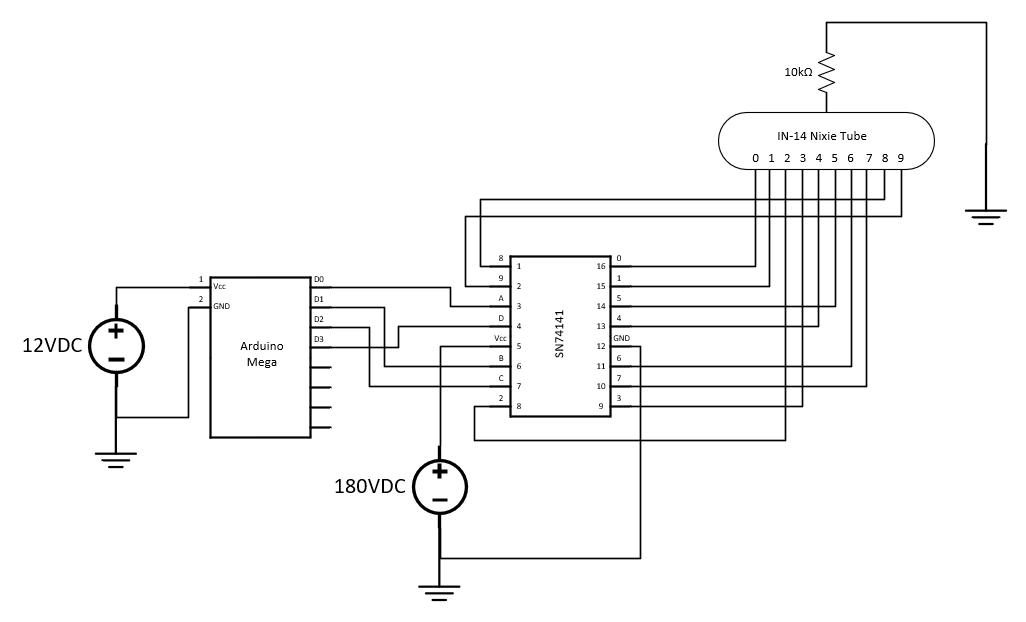Nixie Clock
Nixie tubes are a cool old-fashioned way of displaying numbers before the invention of LCDs. The look like vacuum tubes but work in a different way. The tubes are filled with low pressure neon gas. As the high voltage is applied between the anode and cathode, the electric field around the cathode causes the electrons to change energy state and emit photons. The result is an orange-ish glow around the cathode. A standard nixie tube had ten cathodes 0-9 that are shaped for each respective digit. Changing which cathode is connected to power controls which number is displayed. You can still buy nixie tubes in surplus today, and I thought it would be fun to make a clock out of some.
I made this project a while back, so I do not have the schematic or board files for it anymore to show you, so I instead mocked up a simplified schematic of one of the digits.

The tubes run on 180VDC so I had to use a driver chip called the SN74141 to switch the high voltage. The 10K resistor limits the current. The microcontroller gets the time from an RTC module powered by a watch battery. I made the case out of an old cigar box I found at Goodwill and laser cut holes in the top for the tubes to mount.

You may notice in the video that the clock cycles through every digit on the hour. This is to prevent a problem called cathode poisoning. As a cathode is lit, it spews material outward coating the inside of the glass and other cathodes. If a cathode is not used for a long period of time while others are, it develops a resistive film over its surface that prevents it from illuminating. Periodically cycling each cathode prevents this from happening. One every hour is more than enough, and I figured it would make for an interesting transition.